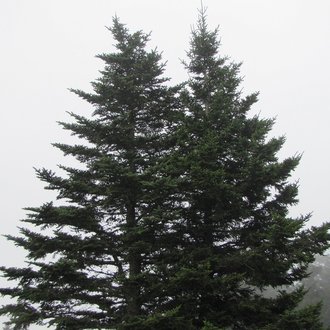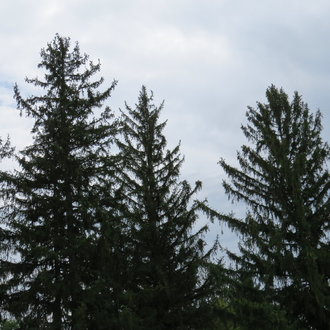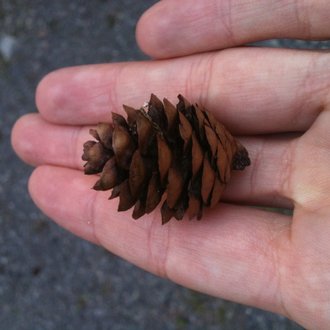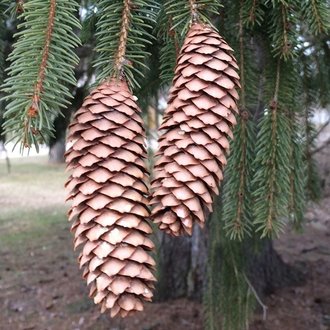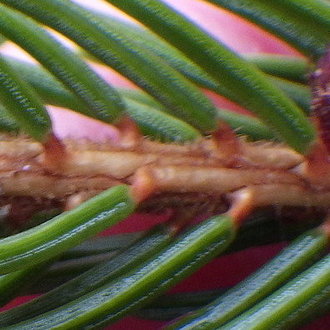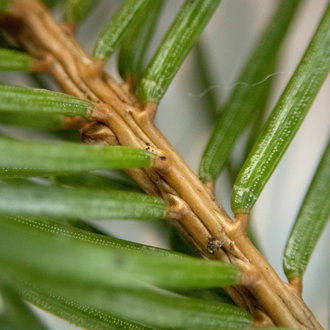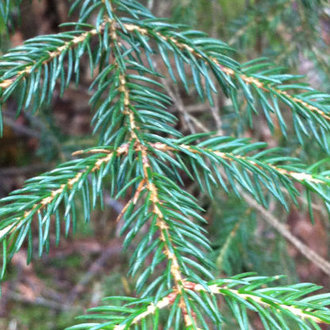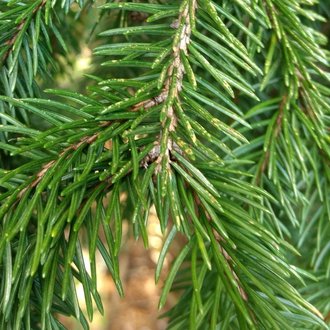Red Spruce vs Norway Spruce
These species are sometimes confused, but are easily distinguished by growth habit and cones, and can also be distinguished by fine details of needles and twigs. In North America, they can occur together where Norway spruce has escaped cultivation and become established in the wild. Most landscaping plants, however, are Norway spruce.
Red Spruce (Picea rubens) | Norway Spruce (Picea abies) |
An evergreen tree of eastern North America; the most southerly-distributed spruce of the east, found at high elevations in the south of its range. | Native to Europe, and widely planted in northeastern North America, occasionally established in the wild. The spruce in North America with the widest growth habit. |
Horizontal branches with erect foliage. Silhouette looks neat and spiky. Crown is narrower and conical. Photo © Ken Kneidel, Public Domain. | Curved, ascending upper branches with drooping foliage. Silhouette looks messy and softer, almost like someone had draped moss on a tree. Crown broader and slightly more rounded. Photo © johnyochum, CC BY 4.0. |
Much smaller cones. Photo © botanygirl, CC BY 4.0. | Very long cones. Photo © Derek, CC BY 4.0. |
Twigs hairy, especially on new growth. Twigs slightly more reddish, especially where needles attach to twigs. Photo © Ben Armstrong, CC BY 4.0. | Twigs not hairy. Photo © Randy A Nonenmacher, CC BY-SA 4.0. |
Needles average shorter, are strongly angled forward in the direction of the twig. Photo © charlie, CC BY 4.0. | Needles average longer, often project more perpendicular to the twig. Photo © Mark Apgar, CC BY 4.0. |
References & External Resources
These short lists show only links helpful for ID. For a complete list of references and resources also covering other aspects of ecology, visit the links section of the full article on each plant, which is the first entry here.



